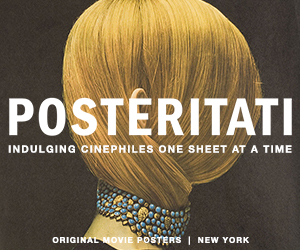“He must be in his own time.”
So someone says of Harrison Ford’s iconic title hero in Indiana Jones and the Dial of Destiny, at a point in the movie when his fate—and I’ll keep it vague to avoid spoilers—is in limbo. Yet the irony is that Indy’s time has already passed, both in Dial itself and the Hollywood landscape circa 2023.
After all, it’s been about 15 years since superheroes swallowed up blockbuster cinema. The Marvel Cinematic Universe’s Iron Man, released in 2008, is generally regarded as the start of that era. That year was also the last time we’d seen Indy, in Indiana Jones and the Kingdom of the Crystal Skull. Since then, his brand of adventure—personal, improvisational, loosely rooted in actual geography and history—has come to feel as dusty as an entombed artifact. Crystal Skull (which I liked) didn’t really feel like a proper goodbye, however. Dial of Destiny does, allowing Indy to nobly, creakily hang up his hat and whip, leaving the rest of us in an increasingly exhausted multiverse of capes and cowls.
After an entertaining World War II-set prologue, featuring a mildly distracting, de-aged Ford and some clean if sub-Spielbergian action from new director James Mangold (Logan, Walk the Line), Dial of Destiny jumps ahead to 1969. On the eve of his retirement around the age of 70, Dr. Henry Walton “Indiana” Jones, Jr. wakes up in his dumpy New York City apartment to the blare of The Beatles’ “Magical Mystery Tour.” The music comes courtesy of his hippie neighbors, who are having an early-morning party in honor of “Moon Day,” a celebration of the Apollo 11 astronauts. The sequence— featuring a grumpier-than-ever Ford sans shirt, to force us to admit his age—is the first of many touches meant to undercut the mythology of “Indiana Jones.” Consider the archeology class we see him teaching later that day. Here the students are falling asleep at their desks, not batting their eyelashes, while others rudely roll a television set into the classroom so they can watch a news report of the astronauts on parade. (These men are the next generation of adventurers, the movie clearly implies.)
But Indy isn’t dead yet, something we can sense in the passion he brings to his classroom lecture (which mirrors the wit, vitality, and sincerity Ford brings to the performance throughout). And so we believe it when Indy’s long-lost goddaughter Helena (Phoebe Waller-Bridge) shows up in search of the artifact of the title and inadvertently drags him into a globe-hopping escapade that involves Greco-Roman history, the Moroccan mafia, sea eels, and Nazis. Yes, always Nazis.
Waller-Bridge is a goddaughter and a godsend. With a spark in her eye and on her tongue, as well as an eager appetite for chaos of any kind, Helena embodies the existing vibe of the franchise—she’s something of an Indy/Marion Ravenwood (Karen Allen) combo—while also bringing her own distinct flavor. Also a screenwriter, Waller-Bridge co-wrote the elegiac James Bond entry No Time to Die and her scenes here have a Bondian flair—especially when she’s conducting an underground auction of illegal artifacts with a room full of unsavory characters.
That sequence is Dial of Destiny at its best: steeped in the traditions of the series (there’s a great gag involving Indy’s whip), while also tweaking things with affectionate humor. The laughs begin to fade during the climax and epilogue, as the movie’s screenwriters—Jez Butterworth, John-Henry Butterworth, David Koepp, and Mangold—draw things to a close with a denouement that is moving, never maudlin. (It’s no spoiler to say Allen’s Marion is involved.) Dial of Destiny leaves us with an Indiana Jones who would rather live in the past than persevere in our superhero-saturated present. So long, Indy. Thanks for the memories.
(7/4/2023)



